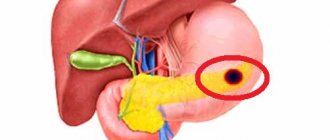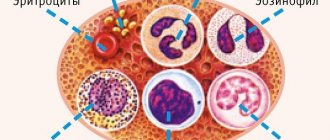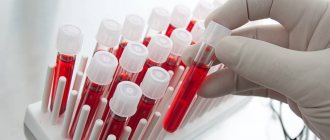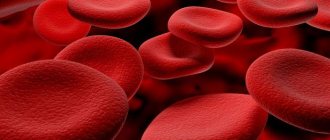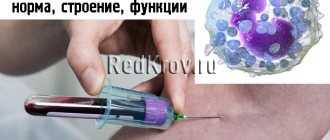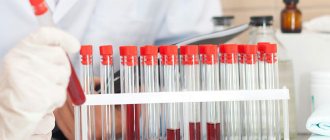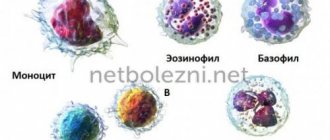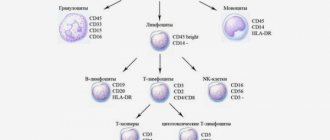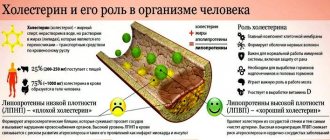When is thrombin time determined?
The purpose of this study is to evaluate the stage of blood coagulation during the fibrinogen activation stage.
Thus, determination of the thrombin time level is prescribed:
- for diagnosing conditions with low levels of fibrinogen in the blood, which are accompanied by a tendency to form blood clots and increased bleeding;
- for liver diseases, such as cirrhosis or tumors;
- when diagnosing miscarriage;
- for the diagnosis of disseminated intravascular coagulation syndrome;
- to assess the risk of thrombosis.
There are a number of pathologies associated with fibrinogen. Thus, its low content in the blood is called hypofibrinogenemia, and when fibrinogen does not perform its functions, despite the normal concentration in the blood, it is called dysfibrinogenemia.
Study of hemostasiogram
After a blood test, the coagulogram is deciphered. What indicators can be seen in a laboratory report, and what do they mean?
Fibrinogen
This enzyme is synthesized in the liver. Normally, this figure ranges from 2 g/l to 4 g/l. For pregnant women, its increase is considered normal, but the fibrinogen content, even in the third trimester, should not exceed 6 g/l. This is a very sensitive factor. Its reaction to inflammation and tissue necrosis has been established. An increase may also indicate infections, acute inflammatory processes (pneumonia), the onset of a heart or brain infarction, hypothyroidism, burns, or contraception. If the amount of fibrinogen decreases, one may suspect a lack of vitamins (C, B 12), hepatitis, toxicosis, taking certain medications, or cirrhosis of the liver. And, of course, the infamous DIC syndrome.
APTT
The time it takes for a blood clot to form is examined. This indicator reacts sharply to changes in other coagulation factors. The normal APTT is from 30 to 40 seconds. An increase in the parameter may indicate hemophilia, vitamin K deficiency, or liver disease.
Prothrombin
Thrombin is synthesized from this protein in the liver when exposed to vitamin K. By changing the value of this factor, the state of the gastrointestinal tract and liver is judged.
Lupus anticoagulant
This indicator is assessed mainly during a hemostasiogram in cases of suspected antiphospholipid syndrome, systemic lupus erythematosus or other autoimmune disease. IgM and IgG antibodies to phospholipids are produced in the blood (normally they are absent), which contribute to an increase in the aPTT rate. Their appearance indicates gestosis or autoimmune diseases. Usually this situation ends in failure: the woman loses her child.
table: normal values of the basic coagulogram
Thrombin time
Shows the time it takes for fibrinogen protein to be converted to fibrin. The normal setting is from 11 to 18 seconds. Since the amount of fibrinogen increases during pregnancy, it is logical to assume that thrombin time also lengthens. However, the indicator still does not go beyond the norm. If the data is deviated from the norm, then this may indicate a lack or excess of fibrinogen in the blood.
Prothrombin time
This indicator means the time of thrombin formation from its inactive form (prothrombin protein). Thrombin is needed to form a blood clot, which helps stop bleeding. If this indicator is increased, hypovitaminosis K, deficiency of coagulation factors, and liver disease can be diagnosed.
Prothrombin index
One of the most important indicators. The clotting time of normal plasma is compared to the same time in the patient. PTI is expressed as a percentage. The normal rate should be between 93-107%. A change in PTI may indicate liver disease and the risk of thrombosis. An increase in the rate may occur during pregnancy or when taking contraceptives. If blood clotting properties deteriorate, the PTI will be lowered. Since the prothrombin index is directly related to vitamin K, a decrease indicates a lack of this vitamin or poor absorption in the intestine (for example, with intestinal ailments). Taking aspirin or diuretics also reduces PTI levels.
Platelets
Blood cells that are directly involved in maintaining hemostasis. The norm in the blood of these cells is from 150,000 to 400,000 per μl. If the indicator decreases, thrombocytopenia is diagnosed. This may indicate that the mother is undernourished. Platelets are synthesized in the bone marrow.
Antithrombin-III
It is protein in nature and is an antagonist of the thrombin enzyme. Its role is to inhibit the action of the coagulation system. This parameter is expressed as a percentage. The norm is from 71 to 115 percent. If the parameter decreases by half, the risk of thrombosis increases. In case of increased blood clotting, anticoagulants are prescribed. In this case, monitoring of the indicator is also necessary.
DIC syndrome
Normally, the coagulation and anticoagulation systems are in balance. If any of the factors of these systems is disturbed, the entire hemostasis becomes unbalanced. This is especially dangerous in pregnant women. The most serious complication is disseminated intravascular coagulation. Activation of the coagulation system and fibrinolysis stimulates the development of DIC syndrome. As a result of the development of pathology, a pregnant woman may experience placental abruption, endometritis, or amniotic fluid embolism.
D-dimer
As a result of incomplete disintegration of fibrin fiber, rather large “fragments”—D-dimers—appear. This is one of the main indicators of a coagulogram for pregnant women. The general norm is less than 500 ng/ml. However, other parameters are considered normal in pregnant women. Already at the beginning of pregnancy, the indicator begins to increase, and before childbirth it exceeds the norm several times. An increase may also be observed in patients with diabetes mellitus, with kidney disease, during complicated pregnancy (preeclampsia), and in old age.
standard form of unexpanded coagulogram
Antibodies to phospholipids (Antiphospholipid syndrome)
The disease is autoimmune. The amount of antibodies to phospholipids begins to increase in the body. This is a series of symptoms that characterize arterial and venous thrombosis. Pregnant women diagnosed with APS are at risk of losing their baby due to fetaplacental insufficiency.
Plasma recalcification time
Indicator of fibrin protein clot formation. This parameter reflects the coagulation process as a whole.
Plasma tolerance to heparin
This test is carried out simultaneously with the previous one. Heparin is added to the plasma and the time of plasma recalcification is noted. If this indicator is less than normal, changes in other factors of the coagulation system are possible. Liver cirrhosis and hepatitis are suspected. When the parameter increases, it can be assumed that the body has diseases such as heart failure, prethrombosis, and malignant tumors. However, normally, an increase in the indicator can occur in the last stages of pregnancy.
Important! It should be noted that decoding of a coagulogram during pregnancy (as, indeed, for all other patients) can only be carried out by a specialist. It is unacceptable to diagnose yourself based on one data or another and prescribe treatment.
Tips for preparing for analysis
Advice for preparing for a thrombin time blood test should be given by the referring physician. The study of the indicator is carried out in blood plasma, which is most often obtained by centrifugation of venous blood.
There is nothing difficult in preparing for this analysis:
- blood should be donated on an empty stomach;
- the day before blood sampling, it is important not to overexert yourself physically;
- eliminate emotional stress the day before the test;
- do not smoke for several hours before going to donate blood;
- talk with your doctor about what medications the patient is taking and whether they may affect the results of the study.
Often, taking anticoagulants leads to an overestimation of the indicator, which disrupts the diagnosis process.
RFMK
RFMK are soluble fibrin-monomer complexes that are formed during the degradation of fibrinogen/fibrin molecules under the influence of thrombin. RFMK is one of the early markers of thrombinemia - activation of intravascular coagulation.
Reference values: 3.35-4.0 mg/100 ml plasma
An increase in RFMK is typical during the development of:
- hypercoagulable
- DIC syndrome
- autoimmune diseases
Antiphospholipid syndrome occupies a special place in the formation of both venous and arterial thrombosis. To diagnose it, a combination of coagulogram methods (lupus anticoagulant) and immunochemical methods (IgG and IgM antibodies to antiphospholipids) is required.
Deviation from the norm
If the thrombin time is outside the normal range, then there is a violation in the blood coagulation system at the level of fibrin formation from fibrinogen.
The longer it takes for a clot to form, the greater the chance of bleeding.
Prolongation of thrombin time is observed with:
- taking anticoagulants;
- low fibrinogen levels;
- in cases where fibrinogen is normal, but its quality is “lame”;
- disseminated intravascular coagulation syndrome;
- liver pathologies;
- pregnancy pathologies.
Blood coagulogram - table of normal indicators for adults and children
Main indicators of coagulogram - table of standards:
In children, the indicators are somewhat different. In particular, for newborns the fibrinogen norm is 1.25–3.00 g/l.
A blood test (coagulogram) is performed on a child before any surgical intervention, if hemophilia or other anomaly of the hematopoietic system is suspected, or if there are frequent nosebleeds.
Deciphering APTT in a coagulogram
A blood coagulogram is a test that shows the blood clotting factor. The result of the analysis is the state of hemostasis. In most cases, it is prescribed before surgery, for problems with blood vessels, or suspicion of any type of thrombosis.
A complete assessment of the coagulogram is carried out based on a large number of factors. When partial results are considered, the analysis is called indicative. There is a basic set of analyzes that are carried out during the initial inspection; if they identify deviations, then a more detailed study is carried out.
The main and most important element of any coagulation test is the APTT test, but unlike other parameters such as Thrombin Time, Fibrinogen, RFMC or AVR, the APTT result itself does not require advanced medical knowledge to understand (see table above on it shows how long the aPTT should be normally). As mentioned earlier, the indicator is considered increased or decreased in accordance with the temporary result, which, as we already know, may be more or less than the norm.
